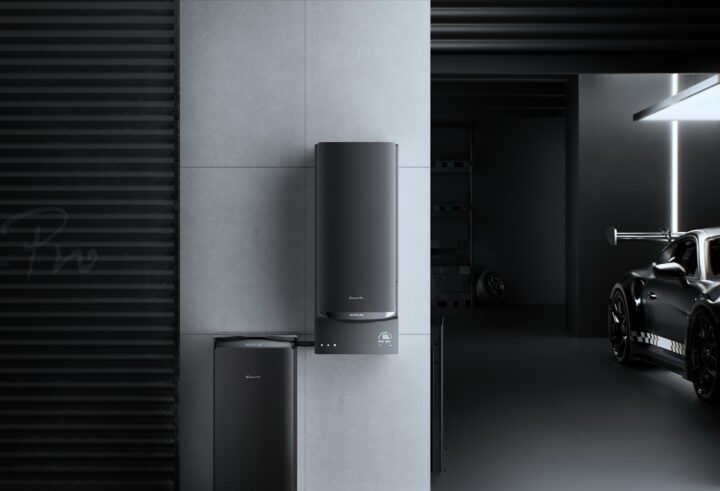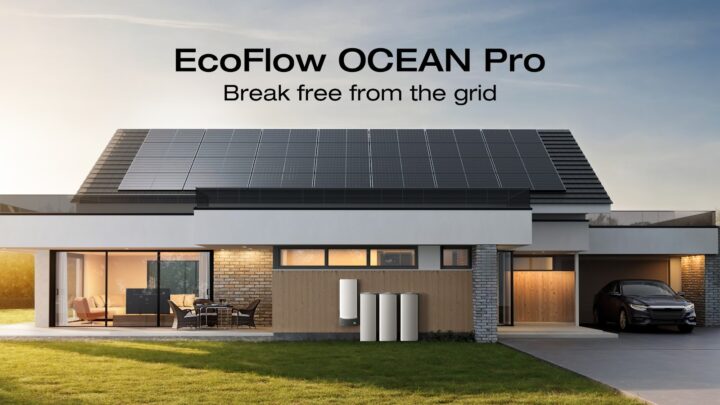For decades, the idea of home backup power came with an intimidating checklist: big, noisy generators, costly fuel deliveries, complicated wiring, and a fair amount of stress. It worked—but it wasn’t exactly family-friendly. Fast forward to today, and things look very different. Modern backup systems are quieter, brighter, cleaner, and, most importantly, far easier to set up.
That shift is thanks to “plug-and-play” energy solutions. Instead of waiting weeks for installations or wrestling with complex controls, families can now get backup power up and running in far less time. Systems like the OCEAN Pro solar battery backup represent this new era—where backup doesn’t feel like an intimidating project, but more like adding another appliance to your home.

Why simplicity matters more than ever
Life is already complicated. Families juggle work, school, budgets, and endless to-do lists. Adding an energy system should make things easier, not harder. Yet for years, backup power meant long waits, expensive electrician work, and equipment that only worked during emergencies.
That’s one reason more households are turning to solar energy for home. Solar is clean, renewable, and—paired with modern systems—far easier to integrate than people expect. The technology has moved beyond complex, intimidating installs. Today, plug-and-play designs make independence accessible to households that don’t want another stressful project on their hands.
The role of storage in making solar simple
Of course, solar panels on their own are only half the story. Without storage, much of the energy they produce goes unused once the sun sets. That’s why adding a home battery is so important—it’s the piece that transforms solar from a daytime helper into a 24/7 solution.

And here’s the good news: modern batteries are built with simplicity in mind. They’re modular, meaning families can start small and add more capacity later. They’re app-controlled, so you can manage your power with the same ease you’d use to adjust your thermostat. And with plug-and-play setups, they avoid the old headaches of generator systems that required constant maintenance.
What “plug-and-play” really means
The phrase gets thrown around a lot, but in the context of backup power, it means a few specific things:
- Faster setup → Instead of months of planning, some systems can be operational in days.
- Straightforward controls → Everything is managed through an app, with precise data and easy adjustments.
- Seamless switchover → The lights don’t even flicker. Smart subpanels, like EcoFlow’s Smart Home Panel 2, switch power automatically in milliseconds.
- Scalable design → Families can start with a smaller system and expand without starting from scratch.
In short, plug-and-play takes the intimidation factor out of energy independence.
The products that make it possible
EcoFlow’s lineup is a good example of how plug-and-play backup is changing the game. Instead of clunky, fuel-burning generators, these systems are sleek, modular, and designed for everyday homes:
- Ocean Pro Home Solar Battery: Built for whole-home coverage with AI-powered optimization, plus a design that actually looks like it belongs in a modern space.
- DELTA Pro Ultra: Expandable from modest to massive needs, making it ideal for families who want flexibility.
- DELTA Pro 3: Compact and portable, so it works both as a home backup and for off-grid trips.
- Smart Home Panel 2: A “brain of the operation” device that seamlessly directs power to up to 10 circuits when the grid goes down.
These aren’t complicated industrial machines. They’re tools designed to blend into everyday life.
Why families are choosing simple systems over complex ones
Here’s the reality: most families don’t want to become electricians in their spare time. They want security, stability, and savings without the stress. Plug-and-play systems meet that need by offering:

- Ease of use → If you can use a smartphone, you can manage your power.
- Less maintenance → No messy fuel, no noisy engines, no constant upkeep.
- Peace of mind → Once installed, you know your home will automatically switch to backup during an outage.
And because these systems are designed with expansion in mind, households don’t have to get everything at once. They can grow their setup gradually as budgets or needs allow.
The bigger community benefit
Plug-and-play isn’t just about convenience at the individual level—it’s also about scale. The easier systems are to adopt, the more households will make the switch. And that creates ripple effects:
- Less pressure on the grid during peak demand.
- Stronger neighborhoods where multiple homes stay powered during storms.
- Cleaner communities, since more homes are storing and using solar power instead of relying on fossil fuels.
In other words, simplicity doesn’t just help families—it accelerates the shift toward a stronger, greener grid.
Financial incentives meet easy setups
One of the most surprising things for many households is how affordable independence can be when you factor in incentives. The U.S. federal government offers a 30% tax credit on solar and storage systems, and many states add rebates or exemptions.
That means a plug-and-play system isn’t just simpler—it’s also easier to afford. Instead of waiting for the “right time,” families can combine incentives with long-term bill savings to make the math work today.
The peace of mind that comes with simplicity
It’s easy to talk about kilowatts and costs, but the real benefit of plug-and-play energy is emotional. Families describe feeling calmer knowing their home will handle an outage without them lifting a finger. They appreciate being able to monitor everything from an app, without worrying about flipping switches or fueling generators.
That ease turns energy from a source of stress into a source of confidence.
Looking at the bigger picture
Think back to how household technology evolved. Washing machines replaced washboards. Microwaves replaced stovetop reheating for leftovers. Each innovation saved time, simplified tasks, and made life more comfortable. Plug-and-play backup systems are following a similar path.
They don’t just protect against blackouts—they make energy management simpler, smarter, and far more approachable for everyday families.
Where this leaves us
Whole-home backup doesn’t have to be intimidating. Plug-and-play systems like EcoFlow’s Ocean Pro prove that energy independence can be as easy as adding any other appliance to your home. With simple setups, app-based control, and expandable designs, these solutions turn resilience into a practical reality for families everywhere.
To put it simply: the future of home backup isn’t complex or overwhelming. It’s simple, approachable, and designed for households that want peace of mind without added stress. And once families experience that simplicity, they’ll wonder why backup ever seemed so complicated in the first place.
